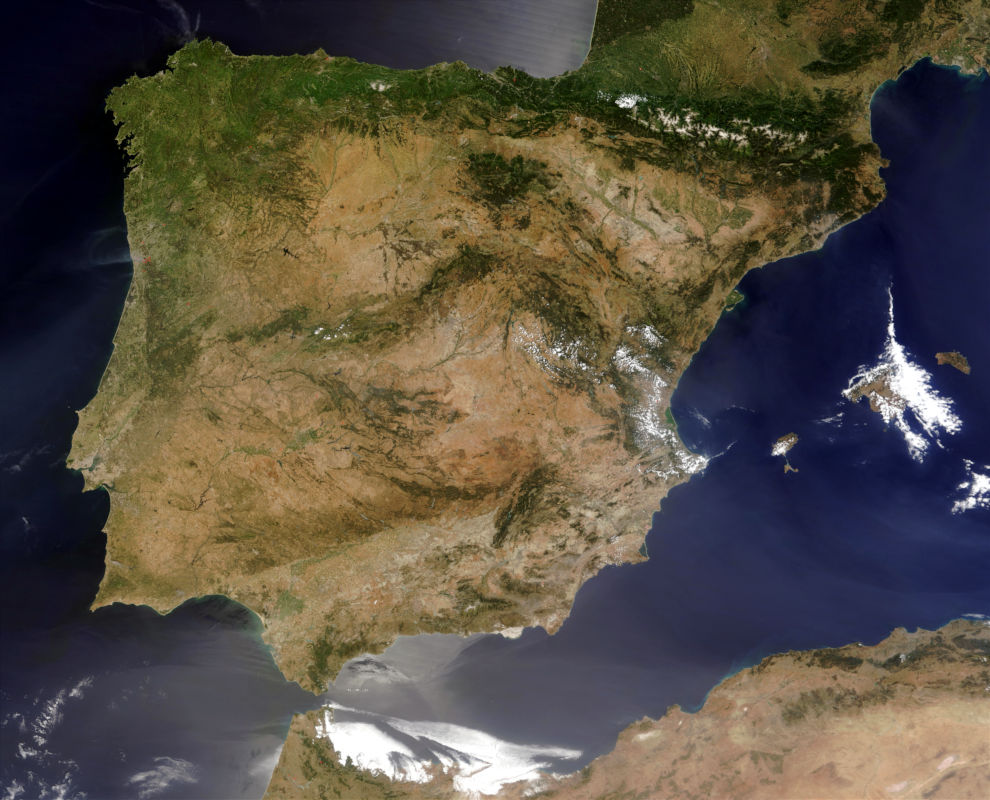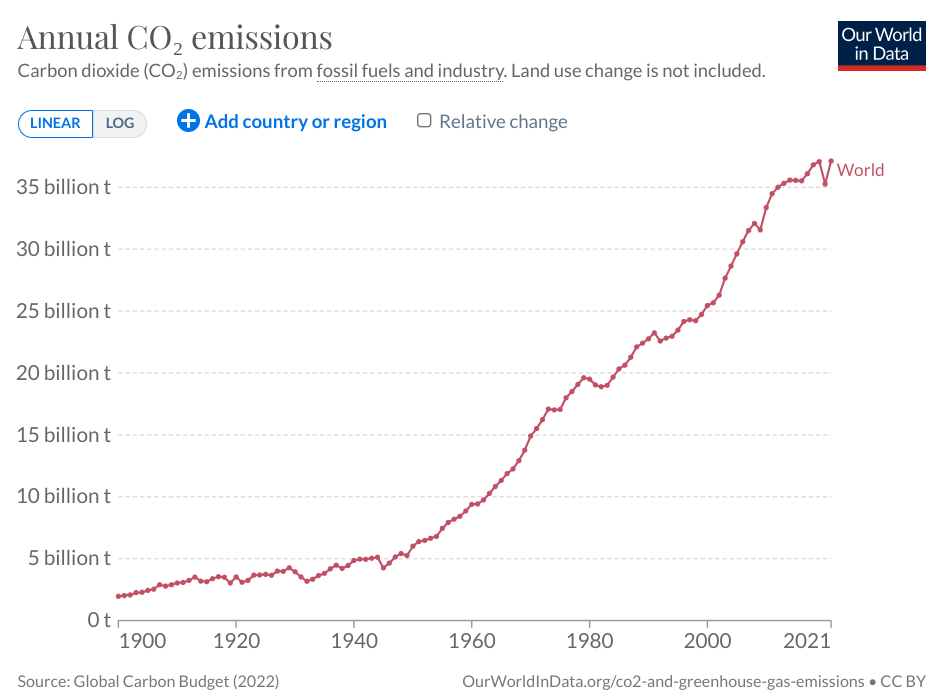🤔 Conclusion: Taking Action
🥵 Some Solutions to Climate Change, Part 5/5

After looking at a few options to help us deal with climate change, it’s now time to evaluate them in cold blood and see if they can make any difference. Then we will consider collective action and how to make it count.
Warning: This will be a more militant post than those preceding it. Because now is the time to take sides and do something about it.
⚖️ Evaluation
Let us first do a comparative evaluation of the three solutions that have been considered so far: 🌲 planting trees, 🪩 mirror roofs, and 🛰️ space screens. In reverse order for fun.
🛰️ Space Screens
Sending screens to space can shield us from some of the Sun and reduce surface temperatures on Earth. This plan is actually not a solution, but at most a mitigation strategy that can buy us a few decades. There can be unforeseen consequences to reducing the amount of sunlight we receive; even more than most of these mega-infrastructure projects, it needs to be carefully considered to think about the possible side-effects. Even the plan itself is full of incognitas, and it is not even clear that it is feasible with current technologies. There are in fact many alternative options that have been proposed: from a single giant mirror to a huge swarm of small screens, with all intermediate possibilities.
But it is just possible that we will need to take mitigation actions before we can come up with a full solution. A small scale implementation can teach us a lot about the required technologies: space guns, satellite swarms, orbiting and de-orbiting stuff.
Having a viable and ready space gun can enable deep space exploration by humans: just send all the required materials and machines to orbit, assemble them up there, and then send the astronauts to board the finished product. Minimal cost and emissions would be required. It is about time that we have an alternative to the tired old rockets!
🪩 Mirror Roofs
Mandating 🪩 mirror roofs on top of buildings can make us think about how to make cities more livable. Just yesterday I saw this infographic by Reuters which shows in a very impressive way how asphalt makes our lives in the city miserable. Lowering air conditioning requirements would also be a very welcome consequence.
But the solutions explored go beyond mirror roofs: solar panels shielding crops can bring surprising synergies: electricity generation plus improved yields. The computations presented can guide us for increasing the albedo of our cities, our countries and our planet, to help cool the environment.
What is today just a convenience can become tomorrow the difference between life and death for many people that cannot afford air conditioning.
🌲 Planting Trees
Finally, at some point we will have to revert all the CO₂ we have poured into the atmosphere, first unwittingly and later almost criminally. By 🌲 planting trees on a massive scale we can remove basically all the excess carbon in the atmosphere.
This is in my opinion our best chance. We need a huge concerted scale from all governments on Earth: planting new dense forests on 30% of the land surface is not going to be easy politically. But the technical difficulties are well known and solvable.
The biggest difficulty is in fact to find enough room to plant so many trees. Just by chance deserts make up exactly 33% of the land surface, but making them green once more can be quite hard. Instead, just planting semi-arid areas would get us more than half the way. Taking my home country of Spain as an example, it can be done in a few decades.

It is interesting to see so many people that are skeptical to this project, and that basically see it as hippie hand-waving. I believe that many people have too much faith in high-tech. Forget about “carbon capture technologies”; trees are our best ally, as they have been for millions of years.
🔎 Other Solutions
Are these the most promising solutions for climate change? Not at all; I have chosen them because they are thought-provoking and fun to think about.
Project Drawdown has a list of solutions which are viable right now and which combined can have a huge impact: between 1000 and 1600 gigatons of CO₂. Remember that we are dealing with some 1600 gigatons of excess CO₂ in the atmosphere, or about 400 gigatons of carbon (since each molecule of CO₂ only has ~27% of carbon in weight). They range from planting bamboo to stop cooking with carbon, with many other ideas,
Most of the projects are a bit too pedestrian to have fun thinking about them, though. But they still are necessary: both pedestrian and outlandish projects have a role to play. In my opinion we will need all the help we can get.
💪 Taking Action
Now let’s see what courses of action we have available, and if they are any good.
🤦 Climate Change Skeptics
First we need to convince everyone on the planet of the danger. Many people are denying the scientific and empirical evidence of climate change. Why?
🙈 I Don’t Want to Believe
Why do some people not “believe” in climate change? Well, because they don’t want to! It’s as simple as that: it is uncomfortable to believe that our planet is being degraded fast by an invisible gas, that many of our descendents will have a hard time surviving in harsh conditions, and that the people that should be doing something about it are doing nothing; so they choose not to believe it.
The hard truth is that you don’t have to believe in something for it to happen. Things happen whether we believe in them or not, but we are so good at covering our eyes and ears when we hear things we don’t like that we may be unaware of a phenomenon until it punches us in the nose.
There is of course a concerted effort by interested parties (oil barons, carbon mine owners, energy companies, but even nuclear energy denialists) to convince us that there is no such climate change, or that it is not caused by us humans, or that it will not have bad consequences after all. But truth be told, they find fertile grounds in high numbers of misguided population.
Even worse, when these “skeptics” are confronted with hard evidence, they will enter cognitive dissonance and go even deeper into their particular rabbit hole. Why? Because acknowledging that they were wrong in the first place would mean accepting that they were misguided, and people don’t want to appear ignorant.
🤯 Convincing the Skeptics
So, what can we do about it?
In this regard, the quick changes in climate that we are witnessing right now can be a mixed blessing, as they are opening the eyes of many climate denialists. Making everyone participate of the challenges involved in turning the tide can perhaps help the general population understand the huge efforts involved. The reversal of so many decades of reckless carbonization will involve sacrifices for everyone on the planet; probably changing our way of life, perhaps sacrifice some sacred cows.
We need to be ready.
🚯 Cleaning Up Our Act
But the most important action we can take is not to solve the existing problem: it is to stop the problem from growing even bigger. Up to now we have not stopped releasing CO₂ into the atmosphere, far from it: we are emitting more than ever, and the rate is increasing.

We need to switch to low carbon energy sources, quick. And our best bet right now seems to be nuclear energy. It is safe (one death since 1986), clean and can scale up to fulfill our needs. Yes, it can be expensive; but meanwhile we are gambling on our planet.
This excellent book from Alfredo García is sadly only in Spanish: Nuclear Energy Will Save the World. Thankfully, the world seems to be warming up to the idea of nuclear power, despite some holdouts from the 1980s like (shame) Greenpeace.
Yes, renewable energy is great and all, but sometimes there is no wind at night. Until we find a way to safely and conveniently store energy, we need to do something now. And that something is nuclear fission.
🤔 Conclusion
Climate change is upon us; every year we are breaking temperature records, and previously cool areas are becoming unbearable in summer. Taking carbon out of the atmosphere will help alleviate the most severe effects. We can start doing it right now, with low tech projects such as planting trees everywhere.
We can also get creative, like with mirror rooftop installations. Getting people involved in climate change mitigation projects is going to play an important role to fight this emergency on a planetary scale. In a few decades we will all be a part of it, like it or not.
☝️ My Contribution
What do I intend to do? For starters, stop paying attention to those supposedly high-tech projects like “carbon capture” or “nuclear fusion”: I think they are just lame attempts at fixing our problems with technology, when better solutions are right there in front of us. I may of course be wrong as I have often been in the past, so you can keep an eye on those projects too if you want.
It is possible to fix our climate, but it will not be easy. The problem is getting bigger every year, so we really need to act now. A concerted effort by every government on the planet will be necessary. I sincerely hope that we spring to action before the situation is too severe.
I strongly believe that we should immediately:
- laugh out of office any policitians that minimize or outright deny climate change,
- switch to low-carbon energy sources,
- take remediation actions seriously,
- start building nuclear power stations right away,
- electrify transport urgently and switch to low-emissions construction techniques,
- use the list of CO₂ emissions per capita as a hall of shame,
- raise sactions against the worst polluters.
In short, treat it as the worldwide emergency that it is now, and as the impending catastrophe that we may have upon us in a few decades. My contribution will be small, and perhaps yours will be too, but together we can fix this mess.
🙏 Acknowledgements
I have learned a lot speaking about these issues with many friends, including Juan Villamizar y Juan Searle.
⏮️ The End
This is the last part of the series about climate change.
- Part 1: 🥵 Some Solutions to Climate Change,
- Part 2: 🌲 Planting Trees,
- Part 3: 🪩 Mirror Roofs,
- Part 4: 🛰️ Space Screens,
- Part 5: 🤔 Conclusion: Taking Action.
Enjoy!
Published on 2023-08-08, last modified on 2023-08-08. Comments, suggestions?
Back to the index.